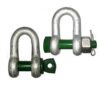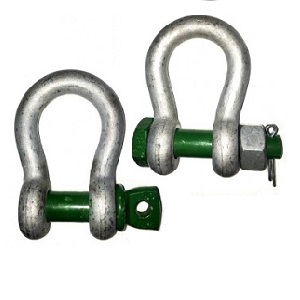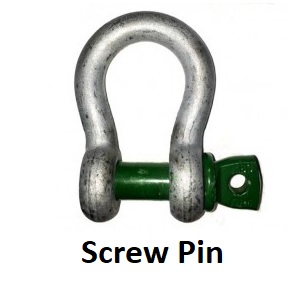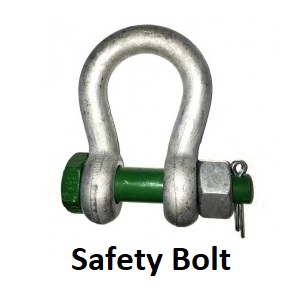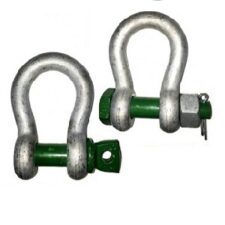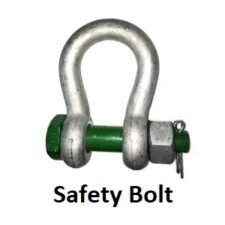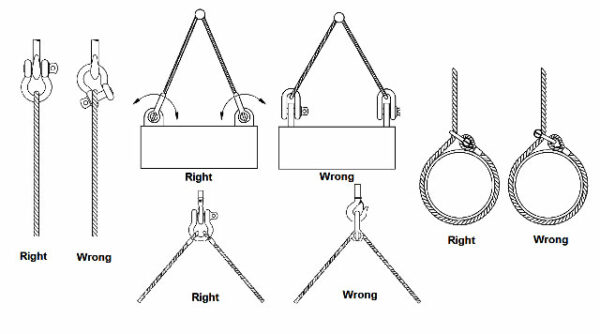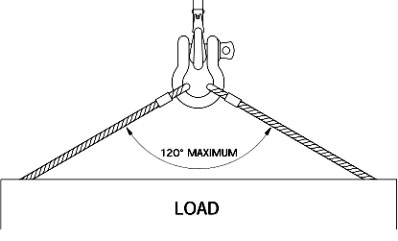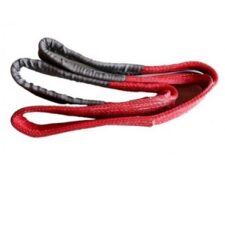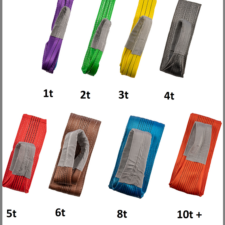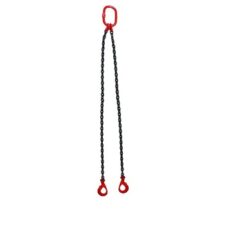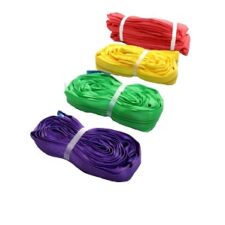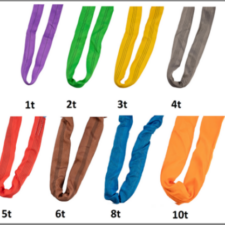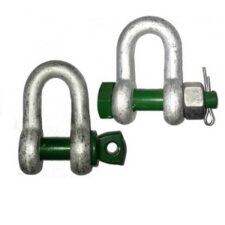Bow Shackles – Green Pin
£2.88 – £574.57Price range: £2.88 through £574.57
Our selection of bow shackles are the Green Pin type and conform to all the necessary standards for UK, EU and USA use. Plus with a 6:1 MBL (minimum breaking load) you can be sure of high quality and safe connectors.
We have many bow shackle sizes available to buy online with WLL up to 85 tonnes.
Bow Shackles Benefits
Unlike the straight sided dee shackle the bow shackle has a more curved or bulbous saddle/body, thus more versatile. It is thanks to its shape that lifting tasks where slings are positioned in the shackle at an angle are permitted. However it is important to note that depending on the angles formed the working load limit will need to be reduced. This is because the larger the angle the more forces are applied to the shackle.
Also only certain angles are permitted, so consult the manufacturers manual/instructions. As an example a 90 degree angle means the working load limit must be reduced to 50% of the original stated WLL.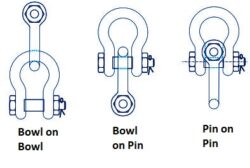
Another benefit of the bow shackle is its capability to seat wider lifting slings nice and flat. A sling should not bunch up in the shackle bowl.
More than one Green Pin bow shackles can be used together at the same time. This means that two shackle can be connected together bow on bow; bow on pin or pin on pin, as long as the correct criteria are met. i.e. they must seat properly; there must be enough room so the inner shackle does not touch the outer shackle body.
There is a big temperature range in which these shackles can be used; from -20 to +200 degrees Celsius is approved.
Bow Shackle Types
At the Lifting Gear Store you will find two key types of bow shackles available to buy online. These are the screw pin or the safety pin with nut and split pin types.
So which type do you choose?
If you need to constantly connect and disconnect your shackle due to the type of lifting operations you are undertaking then the screw pin bow shackle would probably suit you best. They are quick and easy to install so your connections can be speeded up.
Should your lifting operation set up mean that the connection will stay put for a considerable amount of time then the safety bolt type will possibly be the beter choice. They are safer to use and need infrequent checks, unlike the screw pin which can become loose due to friction and vibrations.
On the down side this type takes longer to connect up and dis-engage. This is due to the nut and cotter pin additions to the main pin after it has been inserted into the body. The cotter/split pin ensures the nut and consequently the main pin can’t loosen and fall out, thus a much safer connection point.
The screw pin shackle comes in WLL up to 55 tonne and the safety bolt shackle comes in WLL up to 85 tonne.
Whatever type of lifting shackle you use, always adhere to manufacturers and supplier instructions whilst following safe slinging and lifting practices according to the HSE and LOLER.
| Weight | 0.02 kg |
|---|---|
| Bow Shackle Capacity (G-Pin) | 0.33 ton, 0.50 ton, 0.75 ton, 1 ton, 1.5 ton, 2 ton, 3.25 ton, 4.75 ton, 6.5 ton, 8.5 ton, 9.5 ton, 12 ton, 13.5 ton, 17 ton, 25 ton, 35 ton, 42.5 ton, 55 ton, 85 ton |
| Bow Shackle Pin Type ( G-Pin) | Safety Bolt, Screw Pin |




